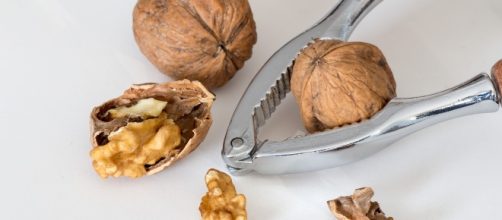Walnuts have been identified as one of the healthiest foods. Belonging to the tree nut family, walnuts are known for their anti-inflammatory and antioxidant properties. Additionally, these rounded, single-seeded stone fruits are considered to be a great source of Copper, Magnesium, Manganese and fiber. Walnuts are also packed with high amounts of monounsaturated and polyunsaturated fats.
Previous studies showed that the combination of healthy fats, fiber and protein in walnuts can increase satisfaction and fullness, making them a significant alternative to unhealthy, fast food snacks.
Now, a study from Beth Israel Deaconess Medical Center (BIDMC) revealed that eating walnuts can actually activate a region in the brain linked with the regulation of hunger and cravings.
A controlled observational study
The study, published in the journal Diabetes, showed that the consumption f walnuts can result to a change of activity in the right insula, a part of the brain related to food cues. For the study, the researchers recruited 10 volunteers with obesity. The volunteers were asked to live in the controlled environment of BIDMC’s Clinical Research Center for two five-day sessions. As opposed to other observational studies that solely relies on self-reporting, a controlled observational study allowed the researchers to keep a better tabs on each participant’s nutritional intake
In one of the five-day sessions, the volunteers were given a daily smoothie containing 48 grams of walnuts.
During the other session, the participants received a walnut-free placebo smoothie, which was nutritionally comparable and flavored to taste like the walnut smoothie. The sessions were conducted at random. This means that some volunteers were taking the walnut smoothie while others were on the walnut-free diet.
Walnuts can make you feel less hungry and more satisfied
On the fifth day of the sessions, the participants underwent a functional magnetic resonance imaging (fMRI). During the fMRI, the researchers showed the participants images of desirable but unhealthy foods, neutral objects, and undesirable but healthy foods.
Interestingly, participants in the Walnut smoothie-session have increased activity in their right insula when shown pictures of highly desirable foods like hamburgers and desserts.
The researchers noted that the right insula is likely to be involved in cognitive control and salience. This suggests that consuming the Walnut smoothie made the participants to pay more attention to food choices, causing them to select the less desirable but healthier options than the highly desirable but unhealthy ones.
With the positive result of the study, the researchers plan to conduct another research involving different amounts or dosages of walnuts to determine whether more amount of walnuts could lead to more Brain Activity or if the effect becomes stagnant after reaching a certain amount.


